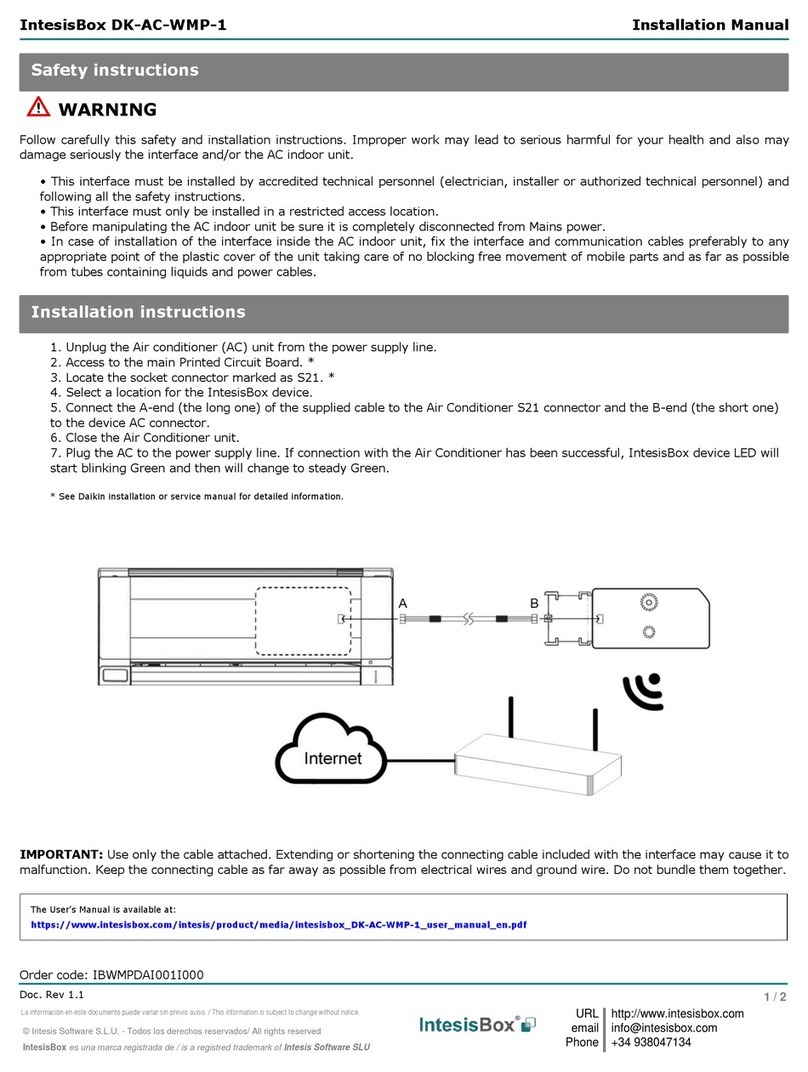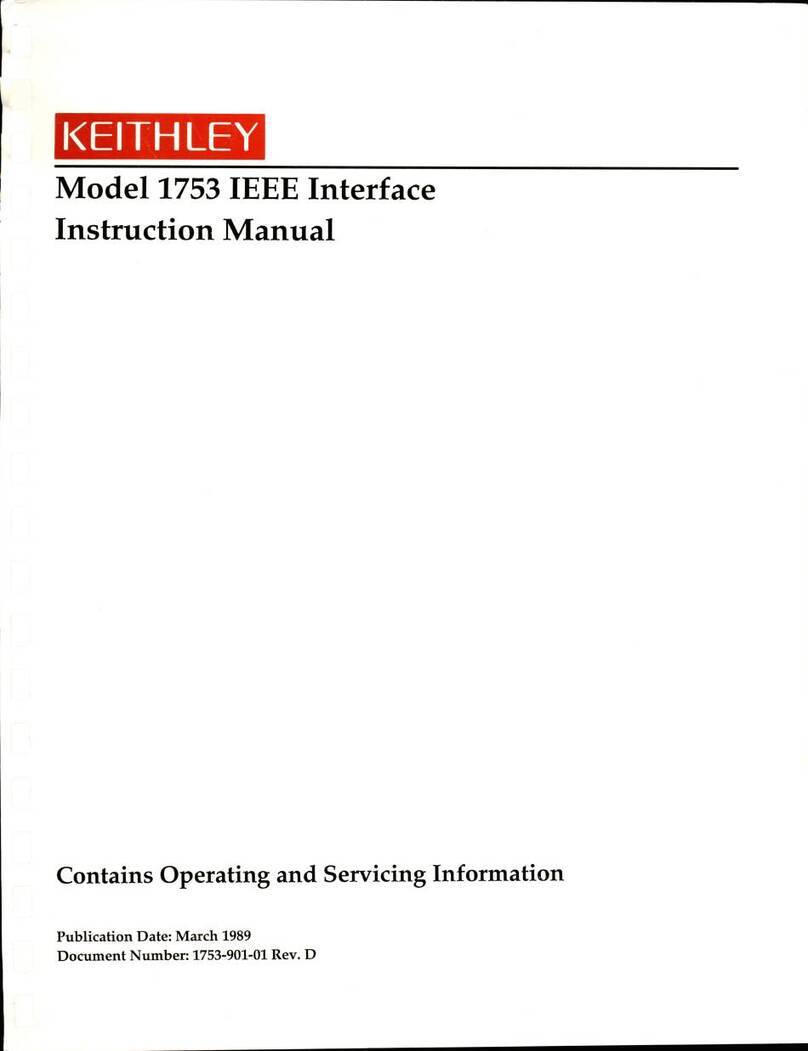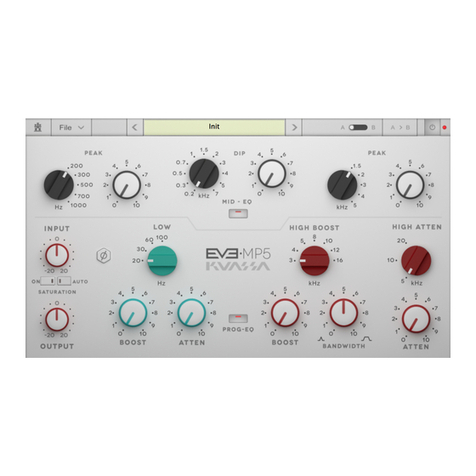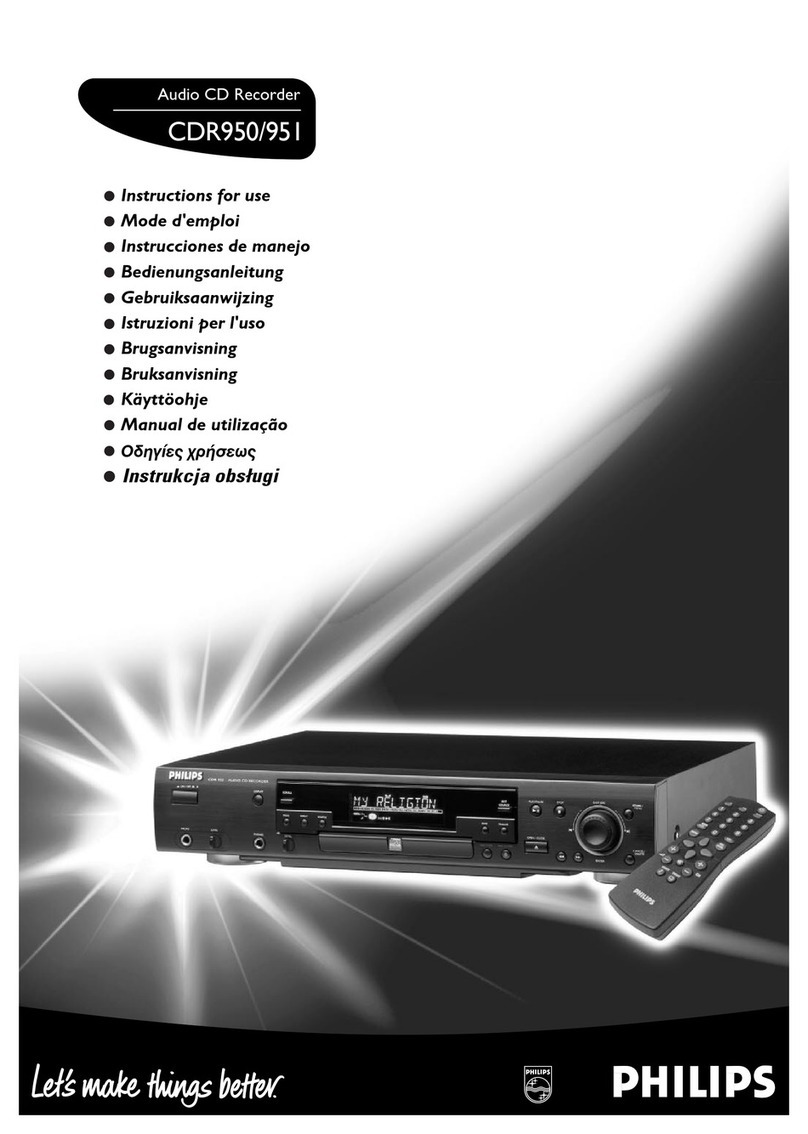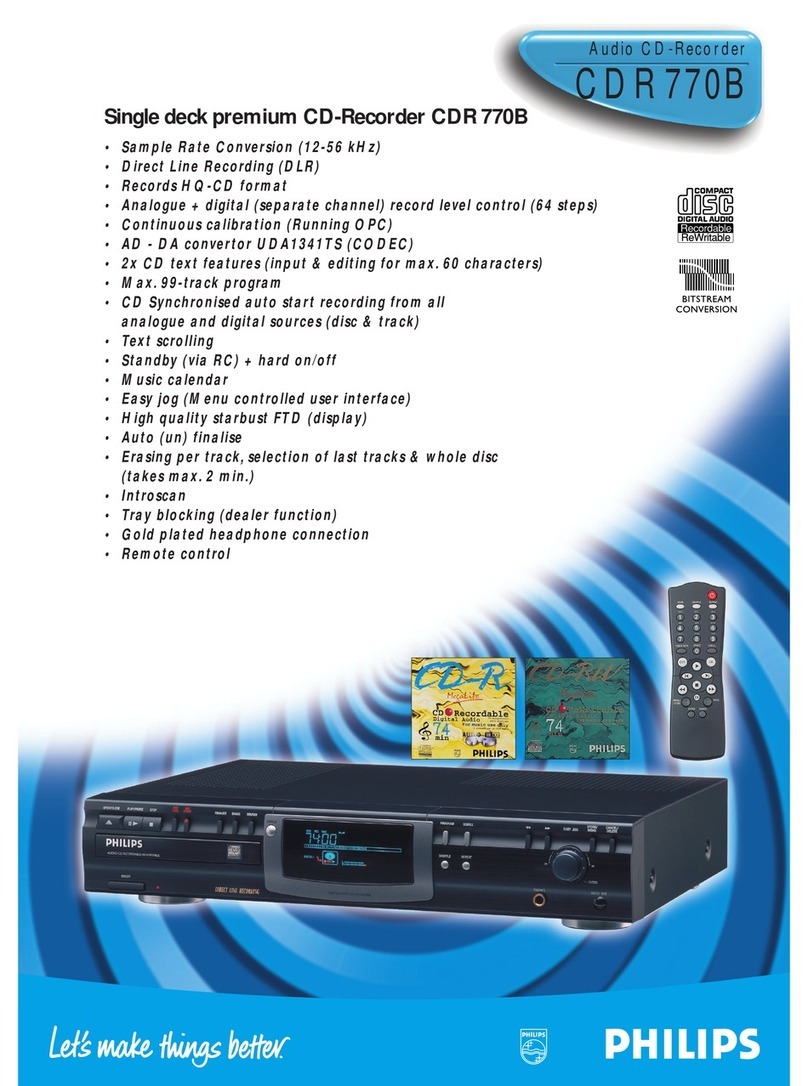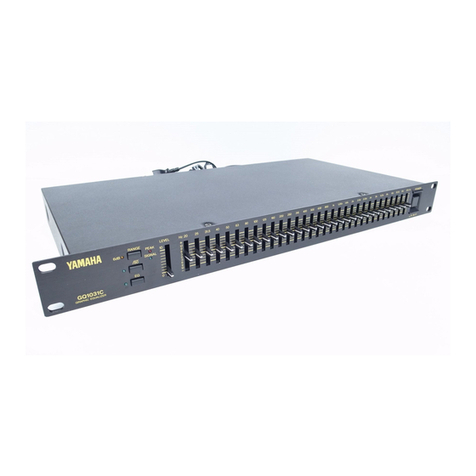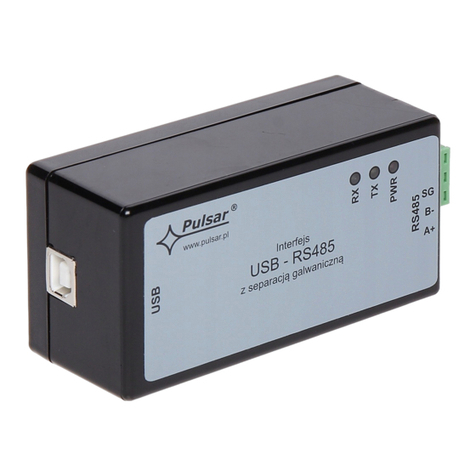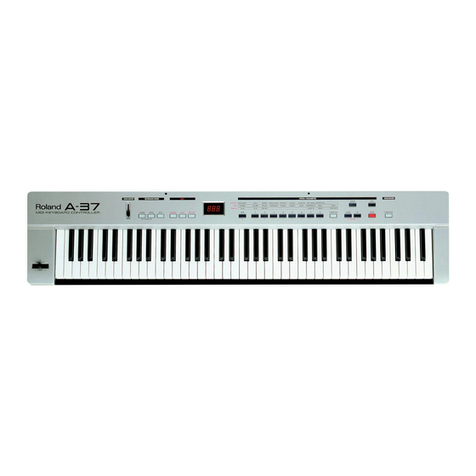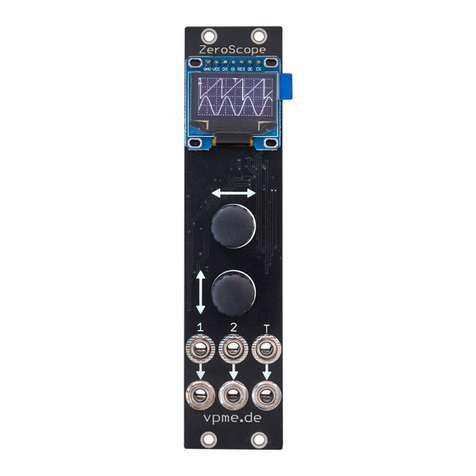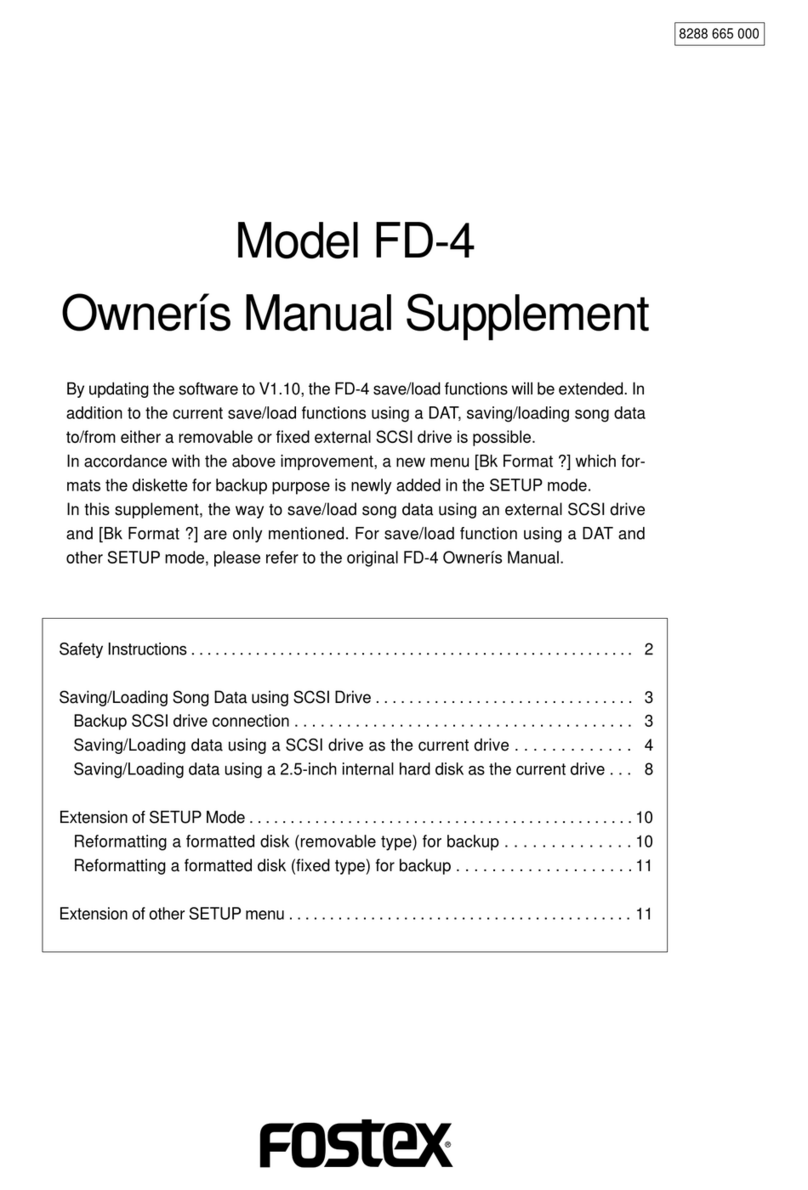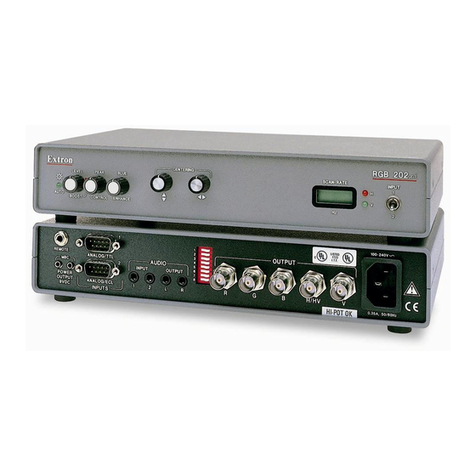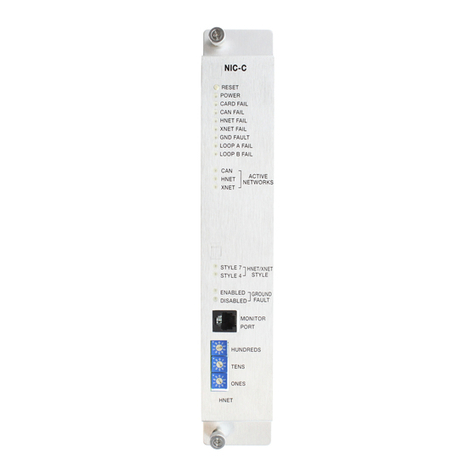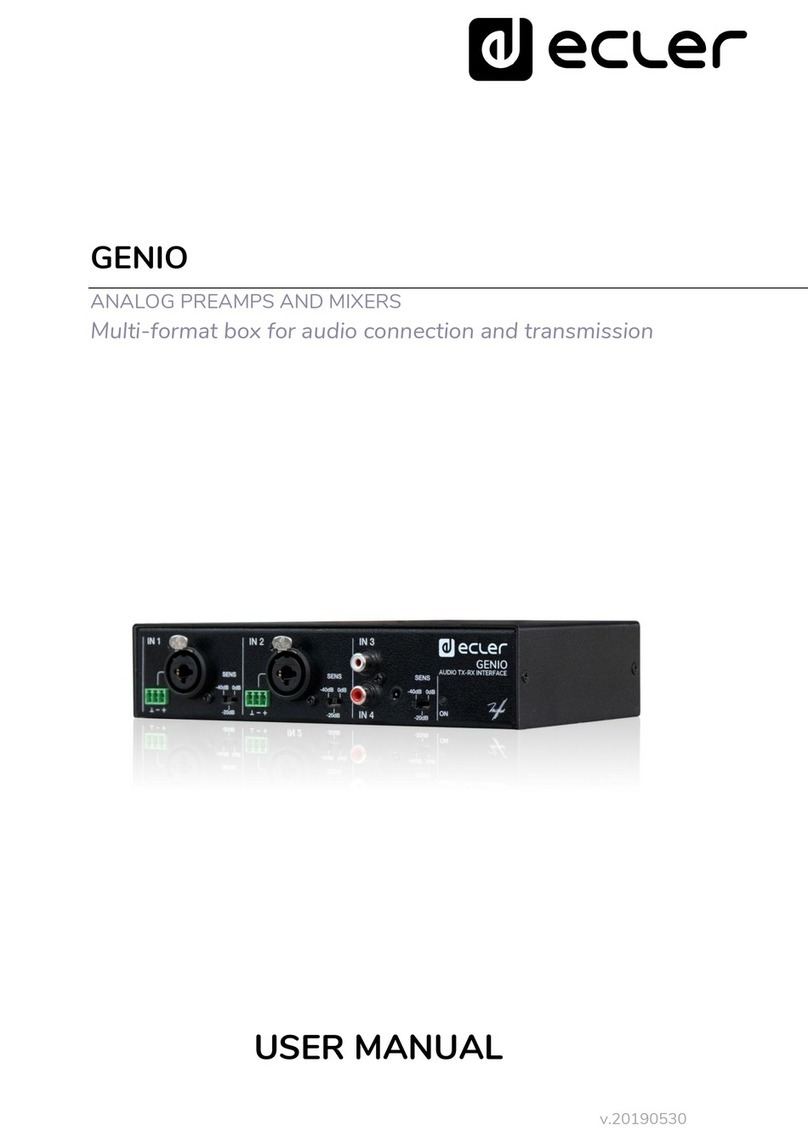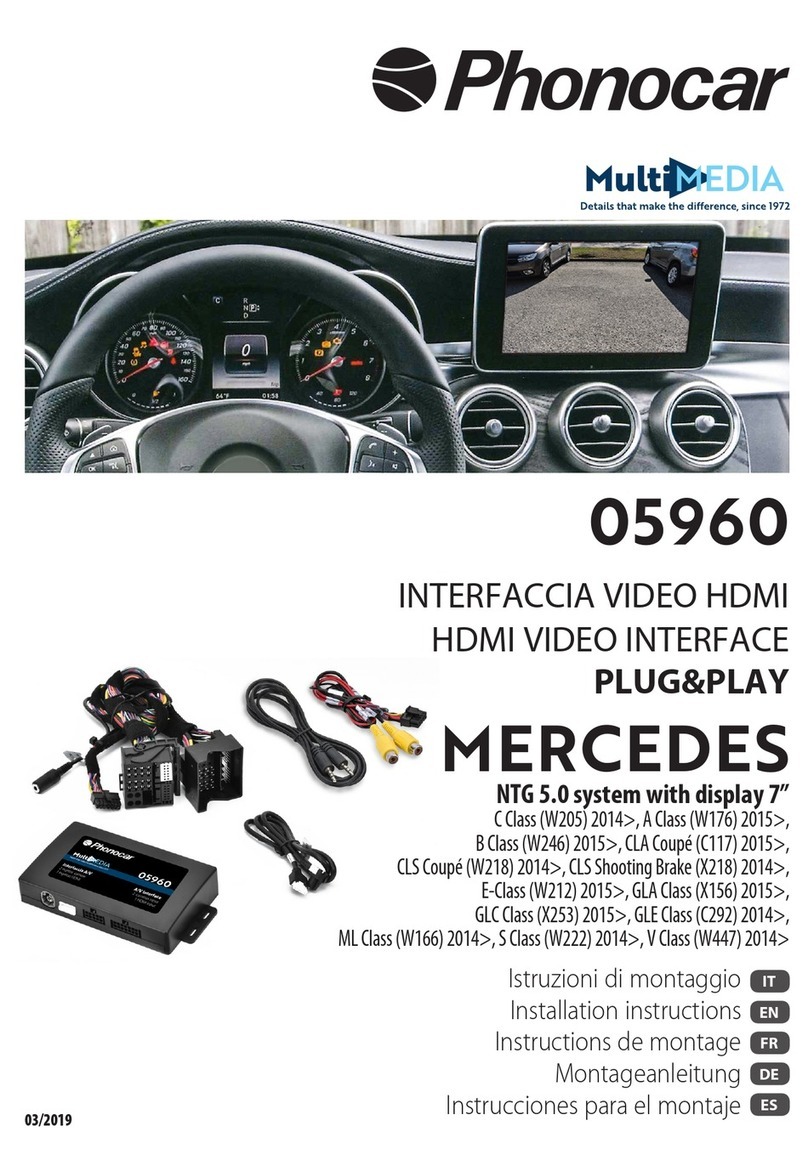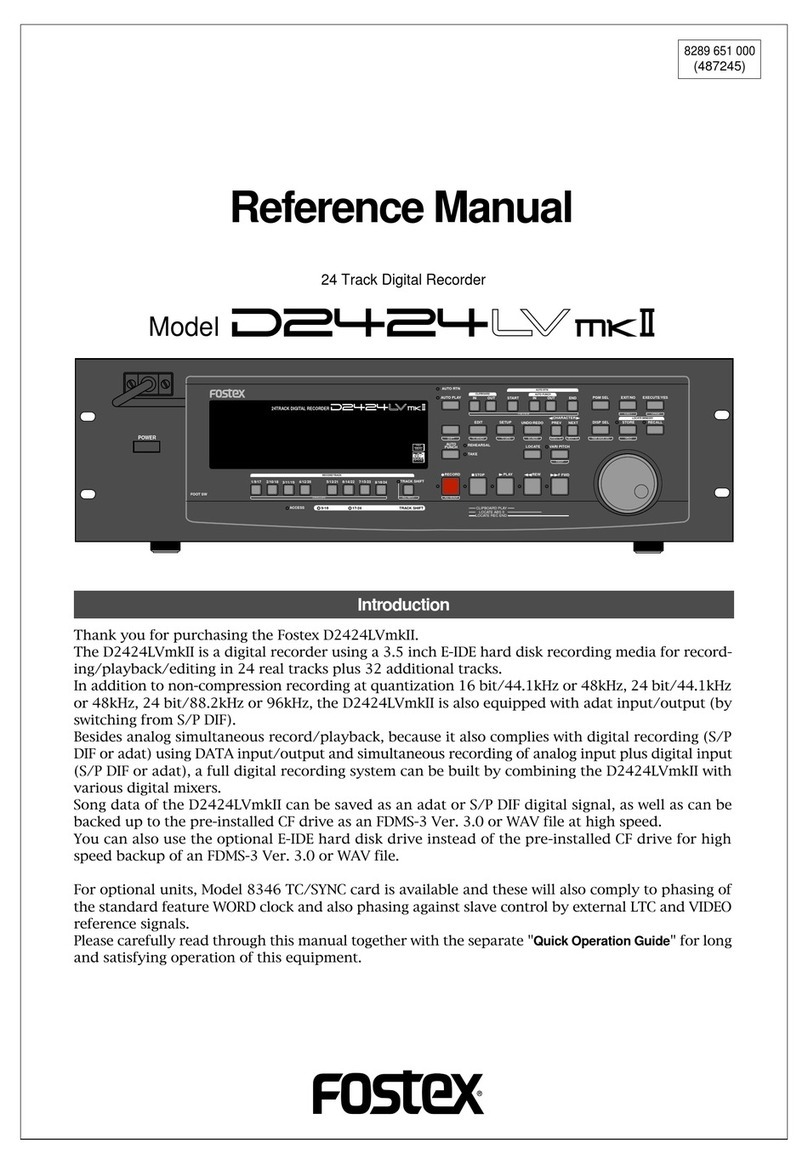Ingeteam Ingecon mWind Series User manual

Ingecon® μWind
Installation manual

The copy, distribution or use of this document or of its content requires written authorisation. Any breach thereof will
be reported for damages. All rights reserved including those of patent rights or design registration.
The conformity of the document content with the hardware described has been checked. However, discrepancies may
exist. Liability will not be assumed for total concordance. The information contained in this document is regularly
reviewed and it is possible that there may be changes in subsequent editions. Other functions may be available which
are not covered by this document.
This document may be changed.
AAY2000IKI04_
02/2012
Ingeteam Power Technology, S.A.
Energy
Avda. Ciudad de la Innovación, 13
31621 SARRIGUREN (Navarra) - Spain
Tel.: +34 948 28 80 00
Fax.: +34 948 28 80 01
e-mail: solar.energ[email protected]
Service Call Center: +34 948 698 715

Important safety precautions
This manual contains important instructions for the installation, handling and use of the following models:
Ingecon® μWind 2.5 TL Ingecon® μWind 2.5
Ingecon® μWind 3 TL Ingecon® μWind 3.3
Ingecon® μWind 3.3 TL Ingecon® μWind 5
Ingecon® μWind 3.68 TL
Ingecon® μWind 3.8 TL
Ingecon® μWind 4.6 TL
Ingecon® μWind 5 TL
Ingecon® μWind 6 TL
and any models derived from these.
This manual should be read carefully and kept in a safe place.
General warnings
The operations described in the manual may be performed only by qualified personnel.
The status of qualified personnel referred to in this manual will be, as a minimum, that which meets
all the standards, regulations and laws regarding safety applicable to the tasks of installing and oper-
ating this unit.
The responsibility for designating qualified personnel will always fall to the company to which the
personnel belong. It is necessary to decide which workers are suitable or not for carrying out specific
work to preserve their safety at the same time as complying with occupational safety legislation.
These companies are responsible for providing appropriate training in electrical equipment to their
personnel and for familiarising them with the contents of this manual.
All applicable safety-related legislation for electrical work must be complied with. Danger of electric
shock.
Compliance with the safety instructions set out in this manual or in the suggested legislation does
not imply exemption from other specific standards for the installation, place, country or other circum-
stances that affect the inverter.
Opening the door of the housing does not imply there is no voltage inside.
The risk of electric shock exists even after disconnecting from the grid, the wind generator and the
auxiliary supplies.
Only qualified personnel may open it, following the instructions in this manual.
In units which include an isolating switch, never switch from OFF to ON without first ensuring there
is no DC voltage entering the equipment.
As long as the wind generator receives wind, the DC cables will be live.
The entire manual must be read and understood in full prior to manipulating, installing or operating
the unit.
AAY2000IKI04 iii
Installation manual Ingeteam Power Technology, S.A.

Following is a list of the basic obligatory safety standards for each country:
• RD 614/2001 and RD 1699/2011 in Spain.
• CEI 11-27 in Italy.
• DIN VDE 0105-100 and DIN VDE 1000-10 in Germany.
• UTE C15-400 in France.
Carry out all control and handling without voltage.
As a minimum security measure in this operation, the so-called five golden rules should always be
followed:
1. Disconnect
2. Prevent any possible resupply
3. Check there is no voltage
4. Ground and short circuit the equipment
5. Protect from live elements, if any, and put up safety signs around the work zone.
Until these five steps are completed, the work area cannot be considered voltage-free and any work
performed will be considered to be work on live equipment.
Category III - 1000-Volt measuring instruments must be used for checking for the absence of voltage.
Ingeteam accepts no liability for any damages caused by improper use of the equipment.
AAY2000IKI04
iv
Installation manualIngeteam Power Technology, S.A.

Potential hazards for people
Bear in mind the following warnings concerning personal safety.
DANGER: Electric shock.
The equipment may remain charged after disconnecting the wind generator and mains power.
Carefully follow the mandatory steps in the manual for removing the voltage.
DANGER: Explosion.
There is a very low risk of explosion in very specific cases of malfunction.
The casing will protect people and property from the explosion only if it is correctly closed.
DANGER: Crushing and joint injuries.
Always follow the indications in the manual on moving and placing the unit.
The weight of this unit can cause lesions, serious injury and even death if not handled correctly.
DANGER: High temperature.
The flow of air from the side and top outlets can reach high temperatures which can cause injury to
people exposed.
The back and side of the unit act as a radiator. Do not touch, danger of severe burns.
AAY2000IKI04 v
Installation manual Ingeteam Power Technology, S.A.

Potential hazards for the equipment
Bear in mind the following warnings concerning protection of the equipment.
Should the grid or the invertor fail, on power will be extracted from the wind turbine, and so the wind
generator must have a braking system or additional speed limiting to guarantee it never exceeds the
equipment’s maximum operating limits (Vdcmax= 550 V).
CAUTION: Ventilation.
The unit requires quality air flow while it is operating.
Keeping the unit in the upright position and the inlets free of obstacles is essential for this air flow
to reach the inside.
CAUTION: Connections.
After all duly authorised handling, check that the inverter is ready to start operation. Only after this
can it be connected following the instructions in the manual.
Do not touch boards or electronic components. The most sensitive components can be damaged or
destroyed by static electricity.
Do not disconnect or connect any terminal while the unit is operating. Disconnect and check for
absence of voltage first.
Personal protection equipment (PPE)
Use all items comprising the protection equipment.
Chapter “4. Safety instructions” contains references to the use of this equipment depending on the situation.
The standard personal protective equipment is:
• Safety goggles for mechanical hazards
• Safety goggles for electrical hazards
• Safety footwear
• Helmet
AAY2000IKI04
vi
Installation manualIngeteam Power Technology, S.A.

AAY2000IKI04 vii
Installation manual Ingeteam Power Technology, S.A.
1. Overview .................................................................................................................................................9
1.1. Introduction .....................................................................................................................................9
1.2. Equipment description ......................................................................................................................9
1.2.1. Models ....................................................................................................................................9
1.2.2. Options ...................................................................................................................................9
1.2.3. System description ...................................................................................................................9
1.2.4. Ingecon® μWind Interface (IWI) ...............................................................................................11
1.2.5. Compositions .........................................................................................................................11
1.3. Compliance with regulations ............................................................................................................12
1.3.1. CE marking ............................................................................................................................12
Low Voltage Directive ...................................................................................................................12
Electromagnetic Compatibility Directive .........................................................................................12
1.3.2. VDE0126-1-1 and VDE-AR-N 4105 ..........................................................................................12
1.3.3. Regulations for connection to the ENEL Distribuzione grid ..........................................................12
1.3.4. Engineering Recommendations G83/1-1 ...................................................................................12
2. System description .................................................................................................................................13
2.1. Location ........................................................................................................................................13
2.1.1. Environment ...........................................................................................................................13
2.1.2. IP rating ................................................................................................................................13
2.1.3. Ambient temperature ..............................................................................................................13
2.1.4. Atmospheric conditions ...........................................................................................................13
2.1.5. Contamination class ...............................................................................................................13
2.1.6. Acoustic contamination ...........................................................................................................14
2.1.7. Ventilation ..............................................................................................................................14
2.1.8. Support surface and fastening .................................................................................................15
2.2. Environmental characteristics ..........................................................................................................16
2.3. EMC requirements ..........................................................................................................................16
3. Operating, conservation and transport conditions .......................................................................................17
3.1. Equipment reception .......................................................................................................................17
3.2. Handling .......................................................................................................................................19
3.3. Transport ......................................................................................................................................19
3.4. Storage .........................................................................................................................................20
3.5. Conservation ..................................................................................................................................20
3.6. Waste handling ..............................................................................................................................20
4. Safety instructions .................................................................................................................................21
4.1. Contents ........................................................................................................................................21
4.2. Symbols ........................................................................................................................................21
4.3. Definition of tasks to be carried out ..................................................................................................21
4.3.1. Inspection tasks .....................................................................................................................22
4.3.2. Control tasks .........................................................................................................................22
4.3.3. Handling tasks .......................................................................................................................22
4.4. General .........................................................................................................................................22
4.4.1. General risks existing and preventive measures ..........................................................................23
4.4.2. Additional risks and measures in handling tasks ........................................................................23
4.4.3. Personal Protection Equipment (PPE) .......................................................................................23
4.5. Inspection, control and handling tasks ..............................................................................................24
4.5.1. Inspection tasks .....................................................................................................................24
4.5.2. Control tasks .........................................................................................................................24
4.5.3. Handling tasks .......................................................................................................................24
5. Installation ............................................................................................................................................25
5.1. General requirements for installation ................................................................................................25
5.2. Fixing the unit to the wall ................................................................................................................25
TL units .....................................................................................................................................25
Units with a transformer ...............................................................................................................26
5.3. Electrical connection ......................................................................................................................28
5.3.1. Description of cable inlets .......................................................................................................29
Quick connectors for DC connection ..............................................................................................29
Table of Contents

AAY2000IKI04
viii
Installation manualIngeteam Power Technology, S.A.
Quick connector for AC connection ................................................................................................29
Quick connector for communications .............................................................................................29
Multi-purpose glands ...................................................................................................................29
DC circuit breaker .......................................................................................................................30
Ingecon® μWind Interface (IWI) Connector ....................................................................................30
Transformer connectors ................................................................................................................30
5.3.2. Order of connecting the unit ....................................................................................................30
5.3.3. System wiring diagram ............................................................................................................30
5.3.4. Multi-purpose access .............................................................................................................31
5.3.5. Connection for communication via RS-485 serial port ...............................................................32
5.3.6. Connection for communication by other means .........................................................................32
5.3.7. Connection to ground and to the electricity grid .........................................................................32
Protection of the connection to the electricity grid ..........................................................................32
5.3.8. Wind generator connection ......................................................................................................33
5.4. Electrical disconnection ..................................................................................................................33
6. Commissioning ......................................................................................................................................35
6.1. Equipment inspection .....................................................................................................................35
6.1.1. Inspection..............................................................................................................................35
6.1.2. Hermetic sealing of the unit ....................................................................................................35
6.2. Start-up ........................................................................................................................................36
6.2.1. Configuration of the MPP curve ................................................................................................36
6.2.2. Settings ................................................................................................................................37
7. Preventive maintenance ...........................................................................................................................38
7.1. Maintenance tasks ..........................................................................................................................38
8. Display control .......................................................................................................................................39
8.1. Keypad and LEDs ...........................................................................................................................39
8.2. Display ..........................................................................................................................................39
8.3. Main menu ....................................................................................................................................40
8.4. Monitoring .....................................................................................................................................40
8.5. Configuration .................................................................................................................................42
8.5.1. Country/Regulations ................................................................................................................42
8.5.2. Nominal grid voltage.............................................................................................................. 44
8.5.3. Grounding .............................................................................................................................45
8.5.4. V/f Adjustments .....................................................................................................................45
8.5.5. Auxiliary relay ........................................................................................................................46
Insulation fault ............................................................................................................................46
Grid connection ...........................................................................................................................47
V/f Limits ...................................................................................................................................47
Limiting power ............................................................................................................................47
8.6. Language selection........................................................................................................................ 48
8.7. Change date .................................................................................................................................. 48
8.8. Start/Stop .................................................................................................................................... 48
8.9. Reset partial data ...........................................................................................................................49
8.10. Change inverter number ................................................................................................................49
8.11. Autotest.......................................................................................................................................50
9. Troubleshooting ......................................................................................................................................52
9.1. LED messages ...............................................................................................................................52
9.1.1. Green LED .............................................................................................................................52
9.1.2. Orange LED ...........................................................................................................................52
9.1.3. Red LED................................................................................................................................53

1. Overview
1.1. Introduction
The purpose of this manual is to describe the Ingecon® μWind unit and to give appropriate information for its correct
receipt, installation, start-up, operation and maintenance.
1.2. Equipment description
An inverter is a circuit used to convert direct current to alternating current. The function of the Ingecon® μWind units
is to convert the direct current generated by wind generators to alternating current and so enable it to be fed to the
electricity grid.
1.2.1. Models
The main models in the Ingecon® μWind range are:
Ingecon® μWind 2.5 TL Ingecon® μWind 2.5
Ingecon® μWind 3 TL Ingecon® μWind 3.3
Ingecon® μWind 3.3 TL Ingecon® μWind 5
Ingecon® μWind 3.68 TL
Ingecon® μWind 3.8 TL
Ingecon® μWind 4.6 TL
Ingecon® μWind 5 TL
Ingecon® μWind 6 TL
1.2.2. Options
All these models in the Ingecon® μWind range may incorporate the following options:
• DC circuit breaker
• MC3-type quick connectors
• Ingecon® μWind Interface (IWI) connection kit AAY0089
1.2.3. System description
There are several configurations available depending on the features of the equipment being used. These possibilities
are discussed below.
A microgeneration wind power system must have a braking and stopping system in order to ensure the
safety of people and the equipment.
If the braking and stopping system is supplied by others, Ingeteam accepts no responsibility for any
malfunction or the consequences thereof.
Wind generator with DC output and built-in braking system
grid
Ingecon® μWind
wind generator
DC AC
AAY2000IKI04 9
Installation manual Ingeteam Power Technology, S.A.

Wind generator with AC output and built-in braking system
In this case an AC-DC conversion system will be required to change the generator output voltage to DC.
wind generator
grid
conversion system Ingecon® μWind
AC ACDC
Wind generator with DC output with no built-in braking system
An external braking system is needed to be able to stop the wind generator or reduce the angular velocity.
wind generator
heating resistor
grid
braking system Ingecon® μWind
DC ACDC
Wind generator with AC output with no built-in braking system
An external braking system is needed to be able to stop the wind generator or reduce itsangular velocity, as well as
another system to convert from AC to DC before the current reaches the Ingecon® μWind unit.
wind generator
heating resistor
grid
braking and conversion system Ingecon® μWind
AC ACDC
AAY2000IKI04
10
Installation manualIngeteam Power Technology, S.A.

1.2.4. Ingecon® μWind Interface (IWI)
As explained in the previous point, it is necessary in some circumstances to provide an external braking system and/
or an AC-DC conversion system. To fulfill this need, Ingeteam has included the Ingecon® μWind Interface unit in its
range of products.
The Ingecon® μWind Interface unit was designed to work in conjunction with Ingecon® μind converters in the control
and conversion of energy generated by the wind turbine.
The purpose of this unit is to perform the following functions:
• Convert from AC to DC, changing the AC voltage generated by the wind generator to DC for the Ingecon®
μind unit.
• Protect the system from excess rotational speed and overvoltage, as well as limiting power capture when the
generator is working in high wind speeds.
• Shut down the wind generator.
• Remotely control the installation and monitor additional variables of the wind power installation.
With its ability to convert AC to DC, the Ingecon® μWind Interface allows wind generators with a DC output to be
connected too. In this case the protection, monitoring and remote control functions will still be utilised.
wind generator
resistors*
communications
grid
Ingecon® μWind Interface Ingecon® μWind
AC ACDC
* The resistors are not included with the Ingecon® μWind Interface.
The braking resistors must be dimensioned as explained in the Ingecon® μWind Interface
(AAY2000IKI06) manual. Should this point not be complied with, Ingeteam will not guarantee the
ability of the generator to brake and/or stop.
For more information about Ingecon® μWind Interface and its operation in conjunction with Ingecon® μWind units, see
Installation and User Manual “AAY2000IKI06”.
1.2.5. Compositions
At the hardware level, there are small variations between units for different countries.
However, although these differences are small, not all units can be configured to the options of every
country. Refer to the configuration section for further information.
AAY2000IKI04 11
Installation manual Ingeteam Power Technology, S.A.

1.3. Compliance with regulations
This unit can incorporate kits making it adaptable to the regulations for all European countries and countries in other
continents.
1.3.1. CE marking
CE marking is mandatory for the sale of any pro duct within the European Union, without prejudice to standards or
laws. Ingecon® μWind units have CE marking by reason of their compliance with the following directives:
• Low Voltage Directive 2006/95/EC
• Electromagnetic Compatibility Directive 2004/108/EC
Low Voltage Directive
Ingecon® μWind units comply with this directive by means of compliance with the applicable parts of harmonised
standard EN 50178 Electronic equipment for use in power installations and EN 50438 Requirements for the connec-
tion of micro-generators in parallel with public low-voltage distribution networks.
Electromagnetic Compatibility Directive
Ingecon® μWind units comply with this directive by means of compliance with the applicable parts of harmonised
standards:
• EN 61000-6-2 Electromagnetic Compatibility. Part 6-2: Generic standards - Immunity for industrial
environments.
• EN 61000-6-3 Electromagnetic Compatibility. Part 6-3: Generic standards - Emission for domestic
environments.
Compliance with these standards calls for compliance with limits and procedures in other standards of the same
series.
1.3.2. VDE0126-1-1 and VDE-AR-N 4105
In countries such as Germany, Portugal and France, incorporating a device of this type facilitates compliance with the
regulations in force for wind power and microgeneration facilities.
As such, our units comply with the standards:
• VDE 0126-1-1 Automatic disconnection for generating installations connected in parallel with the low voltage
grid.
• VDE-AR-N 4105 Generators connected to the low voltage distribution network.
Compliance with this standard must be requested on ordering the unit.
1.3.3. Regulations for connection to the ENEL Distribuzione grid
In Italy, to connect to the company ENEL’s grid, it is necessary to comply with the regulations the company demands.
Hence our units comply with the applicable part of standard:
• RTC alle rete BT di Enel Distribuzione
Compliance with this standard must be requested on ordering the unit.
1.3.4. Engineering Recommendations G83/1-1
In the United Kingdom there is document G83/1-1, which recommends the characteristics a microproduction gener-
ator needs to have:
• Recommendations for the connection of small-scale embedded generators in parallel with public low-voltage
distribution networks.
Compliance with this standard must be requested on ordering the unit.
AAY2000IKI04
12
Installation manualIngeteam Power Technology, S.A.

2. System description
2.1. Location
Guidelines are provided in this section for choosing a suitable environment and adapting the unit to it properly.
2.1.1. Environment
Place the units in a place which is accessible for installation and maintenance work and which
permits use of the keyboard and the reading of the front indicator LEDs.
Never place any object on top of the unit.
The radiator can reach 85 °C. Do not place any material sensitive to the high surrounding air tempera-
tures close to the inverter.
2.1.2. IP rating
Ingecon® μWind units have an IP65 level of protection against external agents which enables them to be installed
outdoors.
IP65 means that the unit is fully protected against the ingress of dust and also against water jets from any direction
as defined for this level of protection in standard IEC60529.
However, excessive moisture can cause a safety shutdown of the unit to protect it. Hence the following is recommended:
Locate the units in a place protected from rain and avoiding corrosive atmospheres.
2.1.3. Ambient temperature
Ingecon® μWind units are designed to operate at between -20 °C and +70 °C.
To operate in HT mode, the maximum ambient temperature must not exceed 45 °C.
To operate in HP mode, the maximum ambient temperature must not exceed 40 °C.
2.1.4. Atmospheric conditions
The ambient air must be clean and relative humidity must not exceed 50% at over 40 °C. Higher levels of relative
humidity, up to 95%, can be tolerated at below 30 °C.
It should be borne in mind that moderate condensation may occasionally occur as a consequence of temperature vari-
ations and, apart from the unit’s own protection, vigilance of these units is necessary once they have been started up
on sites where it is suspected that the conditions described above will not be present.
2.1.5. Contamination class
The pollution degree for which the units have been designed is level 3.
AAY2000IKI04 13
Installation manual Ingeteam Power Technology, S.A.

2.1.6. Acoustic contamination
When on, the inverter generates a slight buzzing sound.
Do not place it in an occupied room, or on light supports which might amplify this buzz. The mounting
surface must be firm and appropriate for the weight of the unit.
2.1.7. Ventilation
Ingecon® μWind TL Ingecon® μWind
A zone of 30 cm above the unit and 20 cm below and at the sides must be left free of obstacles. Only
in this way will the unit’s cooling system operate correctly.
The cooling system designed for the unit varies from one unit to another as greater heating occurs at higher power
and this requires greater air flow to cool it. This is why some models are cooled by means of natural convection and
others use forced convection with one or two fans.
Natural convection
• Ingecon® μWind 2.5
• Ingecon® μWind 2.5 TL
• Ingecon® μWind 3 TL
Forced convection (1 fan)
• Ingecon® μWind 3.3
• Ingecon® μWind 3.3 TL
• Ingecon® μWind 3.68 TL
AAY2000IKI04
14
Installation manualIngeteam Power Technology, S.A.

Forced convection (2 fans)
• Ingecon® μWind 3.8 TL
• Ingecon® μWind 4.6 TL
• Ingecon® μWind 5
• Ingecon® μWind 5 TL
• Ingecon® μWind 6 TL
2.1.8. Support surface and fastening
To guarantee good heat evacuation and promote sealing, the units must be placed on a perfectly vertical wall or, failing
this, with a slight slope of a maximum of +10° or -10° with respect to the vertical.
>10º
>10º
>10º
>10º
A solid wall must be reserved for fixing the inverter. It must be possible to drill the wall and fit suitable wall plugs and
bolts to support the unit’s weight.
In the Ingecon® μWind TL packaging you will find a full-scale template of the equipment to help you to mark the fixing
holes in the wall.
AAY2000IKI04 15
Installation manual Ingeteam Power Technology, S.A.

For TL models, the distance between drilled holes will be as follows:
7,5
7,5
8020080
7,5
160324
In models with transformers, it is the transformer which will be secured to the wall. The inverter will subsequently be
fixed to the transformer.
The three upper drilled holes are made first. The measurements to be used are shown in the figure. The bottom hole
must be made when the unit is suspended, as explained in Section “5.2. Fixing the unit to the wall”. The figure shows
the approximate distances between the horizontal line formed by the three upper drilled holes and where the bottom
hole will be. It also shows the approximate vertical distance to the level of the top edge of the inverter, which will
subsequently be attached to the transformer fixed to the wall.
100 100
257
478,61
O
10
2.2. Environmental characteristics
The environmental conditions for operation are:
Ambient conditions
Minimum temperature -20 °C
Minimum surrounding air temperature -20 °C
Minimum surrounding air temperature 70 °C
Maximum relative humidity without
condensation 95%
For further information see Chapter “3. Operating, conservation and transport conditions”.
2.3. EMC requirements
The Ingecon® μWind units are equipped with the necessary filtering elements to comply with EMC requirements for
industrial applications in order to prevent disturbances in other equipment outside the installation.
AAY2000IKI04
16
Installation manualIngeteam Power Technology, S.A.

3. Operating, conservation and transport conditions
Failure to follow the instructions provided in this section may lead to damage to the equipment.
Ingeteam accepts no liability for damage resulting from the failure to follow these instructions.
3.1. Equipment reception
Reception
Upon receipt of the shipment, check the terms specified in the Delivery Note, sign the Signature Receiver Goods field
and return the copy to the return address.
Keep the unit in its packaging until immediately before installation. Maintain the unit upright at all times.
If you have purchased inverters with transformers, the transformer and inverter will be received in separate boxes. It
will be possible to identify which transformer corresponds to each unit by means of the serial number, shown on the
shipping label:
μ
μWind
Ingecon® μWind 5TL label
μ
μWind
μ
μWind
Label for Ingecon® μWind 5 and transformer
Unit packaging will be of the following size:
AAY2000IKI04 17
Installation manual Ingeteam Power Technology, S.A.

Model Packaging type Weight (kg) Length x Depth x Height (mm)
2.5TL, 3TL and 2.5
(with no transformer)
Cardboard box with foam
20.3
600 x 400 x 250
3.3TL, 3.68TL and 3.3
(with no transformer) 21.7
3.8TL, 4.6TL, 5TL, 6TL and 5
(with no transformer) 25.3
Transformer 2.5 and
transformer 3.3. 27
Transformer 5 43.7
Unpacking
The serial number (S/N) of the equipment is its unique identifier. This number must be quoted in any communication
with Ingeteam.
25 A
5000 W
30 A
65 ºC
-20 ºC/ 45 ºC
IP65Protección
Fecha de
fabricación
INGETEAM POWER
TECHNOLOGY, S.A.
Avenida Ciudad de la
Innovación 13
31621 Sarriguren (Spain)
www.ingeteam.com
Ingecon® μWind
Ingecon® μWind 2.5 TL
PAC: 2500 W
VAC: 230 VAC
FAC: 50 Hz
Cos φ:1
VDC: 125-550 VDC
Std:
S/N 100110070001
IP65 2011
Never stack more than 20 TL units or more than 10 units with their transformers on a Europallet. In the case of units
with transformers, the transformers must be laid on the first two layers and half the third.
Transport damage
If the equipment has been damaged during transport:
1. Do not proceed with the installation.
2. Notify the distributor immediately within 5 days of receipt of the equipment.
If ultimately the unit has to be returned to the manufacturer, you must use the same original packaging.
Separating the packaging
All the packaging can be delivered to a non-hazardous waste management company.
AAY2000IKI04
18
Installation manualIngeteam Power Technology, S.A.

In any event, each part of the packaging may be recycled as follows:
• Plastic (polystyrene, bag and bubble wrap): Appropriate container (plastic and bottles).
• Cardboard: Appropriate container (paper and cardboard).
3.2. Handling
Correct handling of the units is vitally important in order to:
• Prevent damage to the packaging which enables them to be kept in optimum condition from shipping until
they are unpacked.
• Avoid knocks and/or falls which may harm their mechanical characteristics, e.g. cause incorrect closure of
the housing, loss of IP rating, etc.
• Avoid, as far as possible, vibrations which may cause subsequent malfunction.
If you observe any anomaly, please contact Ingeteam immediately.
3.3. Transport
Appropriate transport and storage of the unit are the necessary first steps for correct use and operation. Taking
Section “3.2. Handling” into account and as a preventive measure, Ingeteam recommends the use of transport
companies specialised in the transport of special and/or fragile equipment.
All units packaged according to Section “3.2. Handling” must be handled with tools to prevent damage to the
packaging.
The unit must be protected during transport and storage from mechanical knocks, vibrations, water splashes (rain)
and any other product or situation which may damage it or alter its behaviour.
Transport over distances of greater than 5 metres must be carried out using a pallet truck or forklift truck, whenever
possible.
Transport using a pallet truck
At least the following requirements should be observed:
1. Place the packaged units centred with respect to the forks.
2. Try to locate them as close as possible to the connection between the forks and the steering unit.
3. In all cases, observe the instructions in the pallet truck’s user manual.
Transport using a forklift truck
At least the following requirements should be observed:
1. Place the packaged units centred with respect to the forks.
2. Try to locate them as close as possible to the connection between the forks and the steering unit.
3. Ensure that the forks are perfectly level to avoid overturning the unit.
4. In any case, observe the instructions in the forklift truck’s user manual.
Once the unit has been transported to the place where it is to be located and only when it is to be installed, unpack
the unit.
Transport of the unpackaged unit
At least the following requirements should be observed:
1. Use the two side holes to grasp the unit with both hands.
2. Follow the necessary ergonomic advice for lifting weights. The unit weighs between 21 and 24 kg, depending
on its power.
3. Do not release the unit until it is perfectly secured or placed.
4. Ask someone else to guide the movements to be made.
AAY2000IKI04 19
Installation manual Ingeteam Power Technology, S.A.

3.4. Storage
If the unit is not installed immediately after receipt, the following points should be taken into account in order to
prevent damage:
• The package must be stored in the position in which the box arrived.
• Keep the unit free of dirt (dust, shavings, grease, etc.) and away from rodents.
• Keep away from water splashes, welding sparks, etc.
• Cover the unit with a breathable protective material in order to prevent condensation due to ambient humidity.
• Units in storage must not be subjected to climate conditions other than those indicated in Section “2.2.
Environmental characteristics”.
• It is very important to protect the unit from chemical products which can cause corrosion, as well as from
salty atmospheres.
3.5. Conservation
In order to permit correct conservation of the units, they must not be removed from their original packaging until it
is time to install them.
In case of prolonged storage, the use of dry places avoiding, as far as possible, sharp changes in temperature is
recommended.
Deterioration of the packaging (tears, holes, etc.) prevents the units from being kept in optimum conditions before
installation. Ingeteam Energy, S.A. accepts no liability for damage in the case of failing to observe this condition.
3.6. Waste handling
During the various processes for installation, start-up and maintenance, waste is generated which must be handled
appropriately according to the regulations in the corresponding country.
At the end of the unit’s life, the waste must be processed by an authorised waste management company.
Ingeteam, in accordance with its policy of respect for the environment, will inform the authorised manager, via this
Section, of the location of components to be decontaminated.
The elements within the unit that must be handled individually are:
1. Electrolytic condensers or condensers containing PCB
2. Batteries and accumulators
3. Printed circuit cards
4. Liquid crystal displays
2
3
1
4
AAY2000IKI04
20
Installation manualIngeteam Power Technology, S.A.
This manual suits for next models
11
Table of contents
